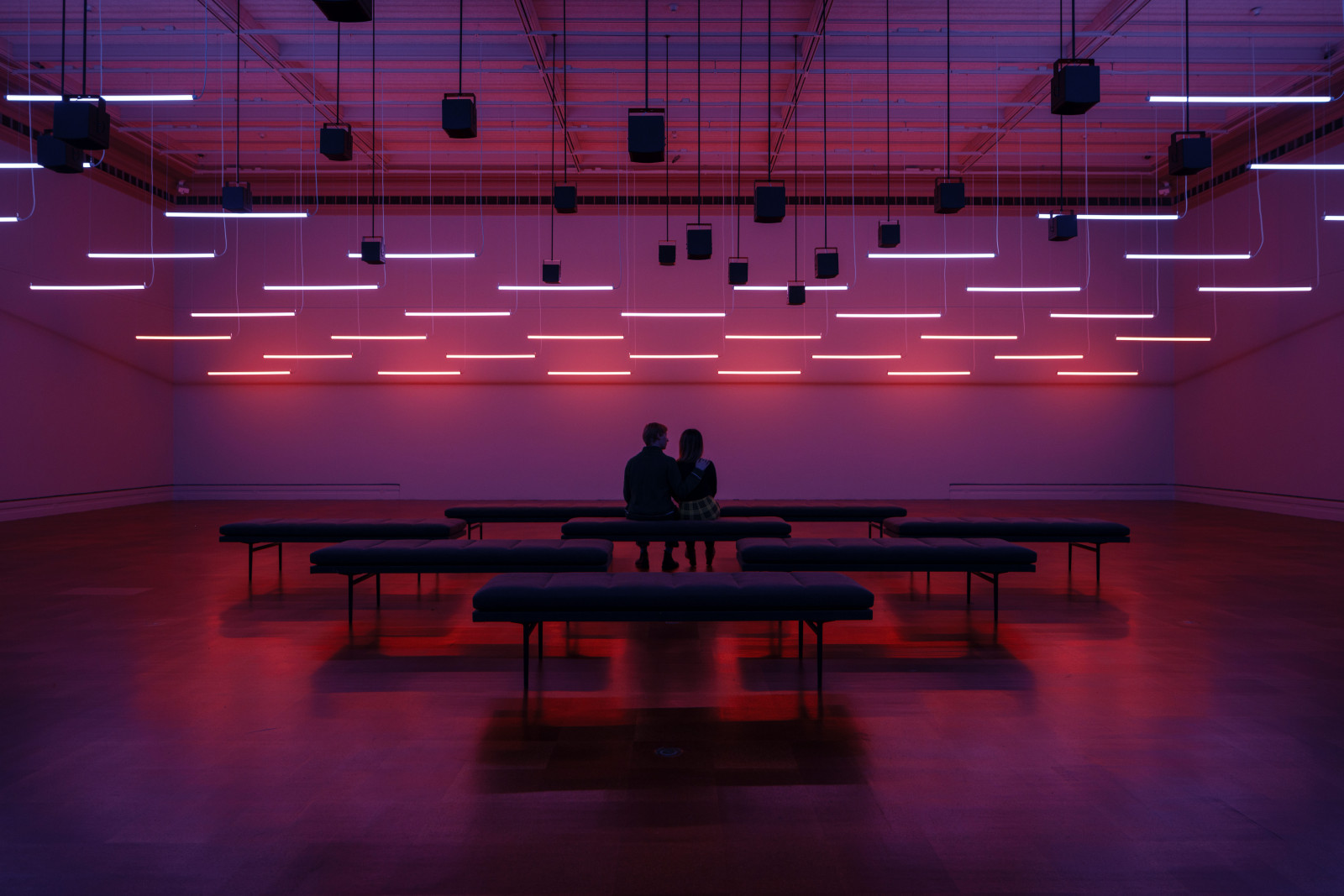Spiegel
Spiegel
Artist
Jaume Plensa
(Spanish, born 1955)
Date2010
DimensionsTwo identical figures: H: 148 1/2 in. (377 cm); W: 92 1/2 in. (235 cm); Depth: 96 1/2 in. (245 cm).
MediumPainted stainless steel
ClassificationSculpture
Credit LinePurchased with funds given by Rita Barbour Kern and Gift of Mrs. George M. Jones, Jr., by exchange
Object number
2012.84A-B
On View
Toledo Museum of Art (2445 Monroe Street), Sculpture Garden
DescriptionThe two figures of Spiegel are identical, each just over 12 feet high, facing one another across a nearly 5-foot gap upon a concrete pad. They are constructed from a white-painted steel latticework made up of individual letters from international alphabets. The figures are seated, holding their knees tucked against their chests. Both heads are faceless, and the figures themselves can be entered—two open-air pavilions that happen to take the shape of bodies. The interior of each figure is lit up at night with bright white bulbs.
The two figures of Spiegel are identical, each just over 12 feet high, facing one another across a nearly 5-foot gap upon a concrete pad. They are constructed from a white-painted steel latticework made up of individual letters from international alphabets. The figures are seated, holding their knees tucked against their chests. Both heads are faceless, and the figures themselves can be entered—two open-air pavilions that happen to take the shape of bodies. The interior of each figure is lit up at night with bright white bulbs.
Label TextSpiegel (German for “mirror”) shows two identical giants, hugging their knees and facing one another, though they are technically faceless. They are nearly bodiless as well—these figures are hollow screens given shape by a painted steel latticework made up of letters from eight alphabets: Latin, Greek, Hebrew, Russian, Arabic, Hindi, Japanese, and Chinese. The pair of figures seems to be communing rather than confronting one another, but it’s hard to say whether they’re communicating. The letters from which they are made are building blocks that would have to be entirely reordered to make any sense as words. Because of their essential transparency, the hollow sculptures interact with light and landscape, sometimes standing out starkly (especially with their bright lighting at night); other times almost seeming to disappear against the sky. They also invite interaction with the viewer—you can walk inside them, looking out through a “cage” of jumbled language.Published Referencescf. Morse, Jed, Jaume Plensa: Genus and Species, Dallas, Nasher Sculpture Center, 2010.
cf. Phillips, Patricia, Jaume Plensa Echo, New York, Madison Square Park Art, 2011.
Jaume Plensa, Wakefield, Yorkshire Sculpture Park, 2011, repr. (col.) p. 24-25, 27-28, 30, repr. (col. det.) p. 22-23.
cf. Heller, Steven, and Mirko Ilic, Lettering Large: Art and Design of Monumental Typography, Monacelli Press, 2013, p. 223.
Ligniti, Emily. Jaume Plensa: One Thought Fills Immensity . Milano, Italy, Skira editore S.p.A. Palazzo Casati Stampa. 2018, fig. 27 (col.) 44.
Exhibition HistoryWest Bretton, UK, Yorkshire Sculpture Park, Jaume Plensa, 2011.750-650 BCE
1st century BCE - 2nd century CE
6th Dynasty (2345-2181 BCE)
1st-2nd century CE
late 19th century, Qing Dynasty (1644-1912)
late 19th century, Qing Dynasty (1644-1912)
late 19th century, Qing Dynasty (1644-1912)

Membership
Become a TMA member today
Support TMA
Help support the TMA mission















